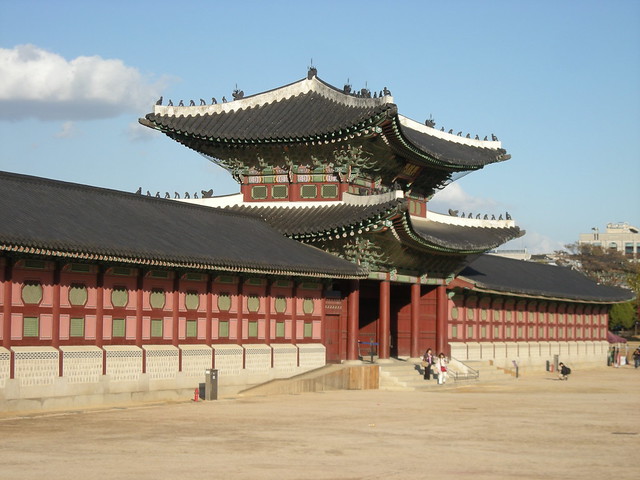Aside from the fact that the old Bill Clinton--the one who loved to come to New Hampshire so he could eat at Dunkin' Donuts not the one who is a virtual vegetarian--would be entirely pleased to find either a DD or Mister Donut on every block, the food here is fantastic.
I had four meals today. If I was not so relatively tall and my hair did not stop so abruptly above my ankles, I could be a hobbit, enjoying breakfast, lunch, tea, supper, and late night snack.
Isaiah cooked potatoes, bacon, and scrambled eggs for me and the other two CouchSurfers, Mathieu and Felix. Mathieu is a Frenchman (boy?) employed in Beijing and Felix is a German, seeking employment in Beijing. They both are here during the Lunar New Year. Isaiah grew up in the tough part of town in Bakersfield, California--also one of the most polluted cities in America. He has hosted about fifty people through
www.couchsurfing.org and is a true believer in its mission. He works at a Christian church across the street from his palatial flat. We have had some interesting discussions about the death penalty. He likes to debate.
Felix stayed behind, but Mathieu and I hit the road at about 10 AM. We walked to the subway through the Nambu Market and went to Gyeonbokgung Palace. Gyeongbokgung is a royal palace located in northern Seoul. First constructed in 1394 and rebuilt in 1867, it was the main and largest palace of the Five Grand Palaces built by the Joseon Dynasty. The name means "Palace of Shining Happiness." It was impressive for its size and for the backdrop of mountains. The changing of the guard was fun, too.
Here are my pictures of the pomp and circumstance.
 |
| The Day Shift includes a wide array of traditional soldiers, drummers, and even a time messenger. |
 |
| Fourteen flags total during both the day and night shifts. |
 |
| Member of the royal military band or Chwitagun. |
 |
| Two regular guards or Gapsa. |
After this, Mathieu and I walked South for a while and had wonderful soup and
kimchi for lunch with "cider," which was a Sprite-like beverage definitely not derived from apples. We climbed a steep foothill of the big mountain that has the Namsan Tower, where I will go when the sun comes out. We wanted to find the big Catholic Cathedral, but found various other landmarks instead, including Seoul Station.
 |
| The old Seoul Station (Hangul: 구서울역사; Hanja: 舊서울驛舍), originally named Keijo (Gyeongseong) Station and designed by Tsukamoto Yasushi of Tokyo Imperial University, was finished on November, 1925. This red brick building, designed in an eclectic style, features a Byzantine-style central dome and a centralized and symmetrical layout. The station was renamed "Seoul Station" in 1947. |
I boarded the incredibly efficient subway (line 3 of 6) and headed to Anguk Station. From there I walked to the Second Best Place in Seoul to meet Sonna Moon, an Exeter classmate of mine who grew up here and knew just what to order. I had their specialty soup and some medicinal tea:
 |
| At Seoureseo Duljjaero Jalhaneunjip 서울서둘째로잘하는집 – translated “The Second Best in Seoul” – they feature a dessert called 단팥죽 or Danpatjuk, or sweet red bean porridge (단팥죽). This is basically a sweet and hot pudding. The with a consistency of a thick soup. There’s large chunks of soft chestnuts to compliment the heavy taste of the red bean pastey gruel. It is sweet and dark red in color-- a great afternoon tea treat. (Source: The Thirsty Pig) |
After this late afternoon snack, I proceeded to dinner with Paul Lim and his son. Paul took us by car to his son's favorite Korean restaurant south of the city. It was delicious--two kinds of fish. The food just kept coming. It was mostly side dishes of egg white and egg yolk, bean sprouts that would make an artist's palette salivate, and a meat substance that was nearly identical to pemmican.
 |
| Alexander Lee and Paul Lim, who sells clothespins. In the background, that is the frozen issue of a spring in the garden of the suburban restaurant where we ate. |






















































